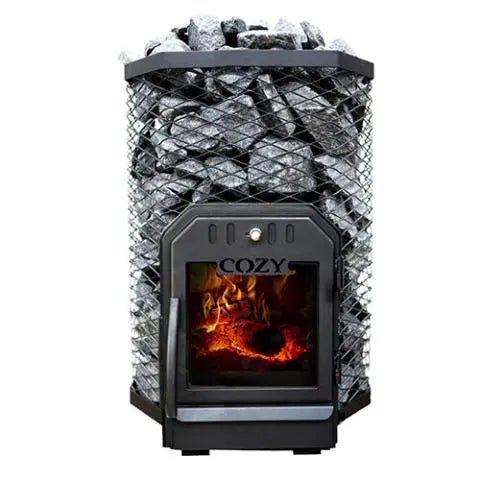
How a Wood-Burning Sauna Heater Works: A Deep Dive into Its Structure & Function
For sauna purists, nothing compares to the crackle of firewood, the soft roar of the flames, and the radiant heat of a traditional wood-fired sauna. But what exactly makes a wood-burning sauna heater tick? Whether you're a homeowner planning a backyard sauna or a builder designing a commercial retreat, understanding the sauna stove structure is essential for safety, performance, and enjoyment.
In this guide, we’ll break down how a wood-burning sauna heater works, what its key components are, and the functional differences between internal vs. external feed models—plus, we’ll link to some of the most trusted options available at My Sauna Plus.
THE CORE COMPONENTS OF A WOOD-FIRED SAUNA HEATER
Every wood-burning sauna heater shares a common anatomy, built for efficient combustion and optimal heat transfer. Here’s a breakdown of the major parts:
1. Firebox (Combustion Chamber)
This is the heart of the heater, where firewood is burned. It's typically made of thick steel or cast iron, capable of withstanding extreme heat for long durations. Well-designed fireboxes are insulated and have baffles that guide hot gases upward.
2. Baffle System
A baffle is a metal plate inside the firebox that redirects hot air and gases. This keeps heat circulating inside the heater longer, increasing efficiency and ensuring sauna stones reach high temperatures.
3. Air Intake & Ventilation Control
Air intake vents feed oxygen to the fire and are essential for controlling the burn rate. Some heaters offer adjustable dampers or vents to control airflow, influencing both burn time and temperature.
4. Stone Compartment
On top of the firebox sits the stone tray or basket, where sauna stones absorb and radiate heat. When water is ladled over them, the steam (“löyly”) created is what gives the sauna its therapeutic, relaxing atmosphere.
5. Chimney (Flue)
The chimney allows smoke and gases to exit the sauna safely. A properly installed insulated chimney system creates a strong draft that keeps the fire burning efficiently while keeping indoor air clean.
Pro Tip: Some wood-fired heaters allow you to install the chimney straight up through the roof, while others allow horizontal flue options for more flexible layouts.
HOW A WOOD-BURNING SAUNA HEATER CIRCULATES AND RETAINS HEAT
When you light a fire inside the firebox:
1. Cold air enters through the air intake vent.
2. The fire heats the air inside the firebox, causing hot gases to rise.
3. The baffle system redirects the hot gases, maximizing stone and metal heating.
4. The hot air and steam radiate throughout the sauna room.
5. Stones continue to hold and slowly release heat—even after the fire dies down.
This slow, radiant heat is what differentiates wood-fired saunas from electric models. It creates a soft, even warmth that many sauna lovers describe as “breathable,” more natural, and deeply relaxing.
INTERNAL FEED VS. EXTERNAL FEED SAUNA HEATERS
A key decision when choosing a wood-burning sauna heater is whether you want to load the wood from inside the sauna (internal feed) or from outside (external feed).
Internal Feed Models:
Wood is loaded through a door inside the sauna room.
Better for smaller or remote saunas without adjacent firewood access.
Easier installation, fewer framing considerations.
External Feed Models:
Firebox door opens outside the sauna (in another room or hallway).
Keeps smoke, ash, and firewood mess out of the sauna room.
Excellent for commercial use, shared saunas, or luxury setups.
Both versions perform similarly in heat output and efficiency—the difference lies in usability and space planning.
READY TO CHOOSE YOUR WOOD-FIRED SAUNA HEATER?
At My Sauna Plus, we offer a curated collection of top-quality wood-burning sauna heaters for every space—from compact cabins to luxury spa retreats. Check those out at www.mysaunaplus.com/collections/wood-burning-sauna-heaters
Need help choosing the right model? Contact our sauna experts here today and / or schedule a consultation.


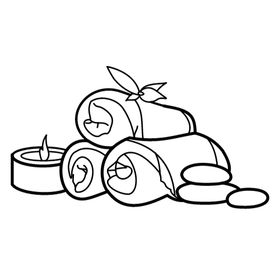

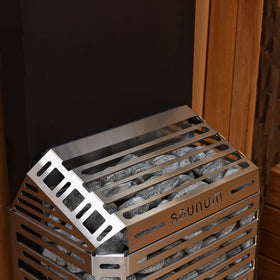
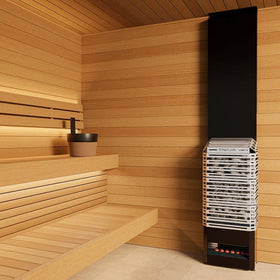
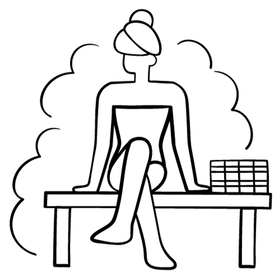

Leave a comment